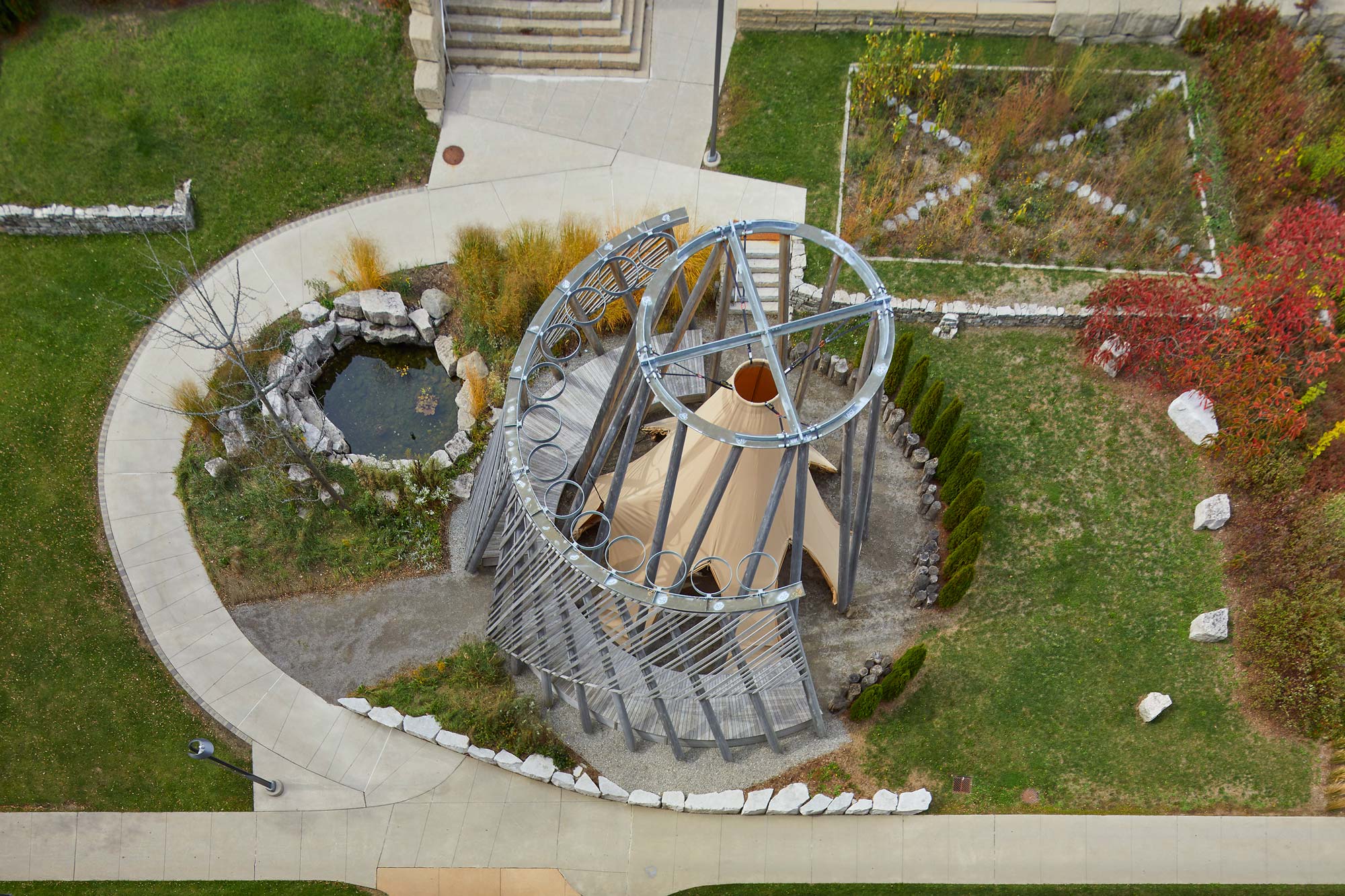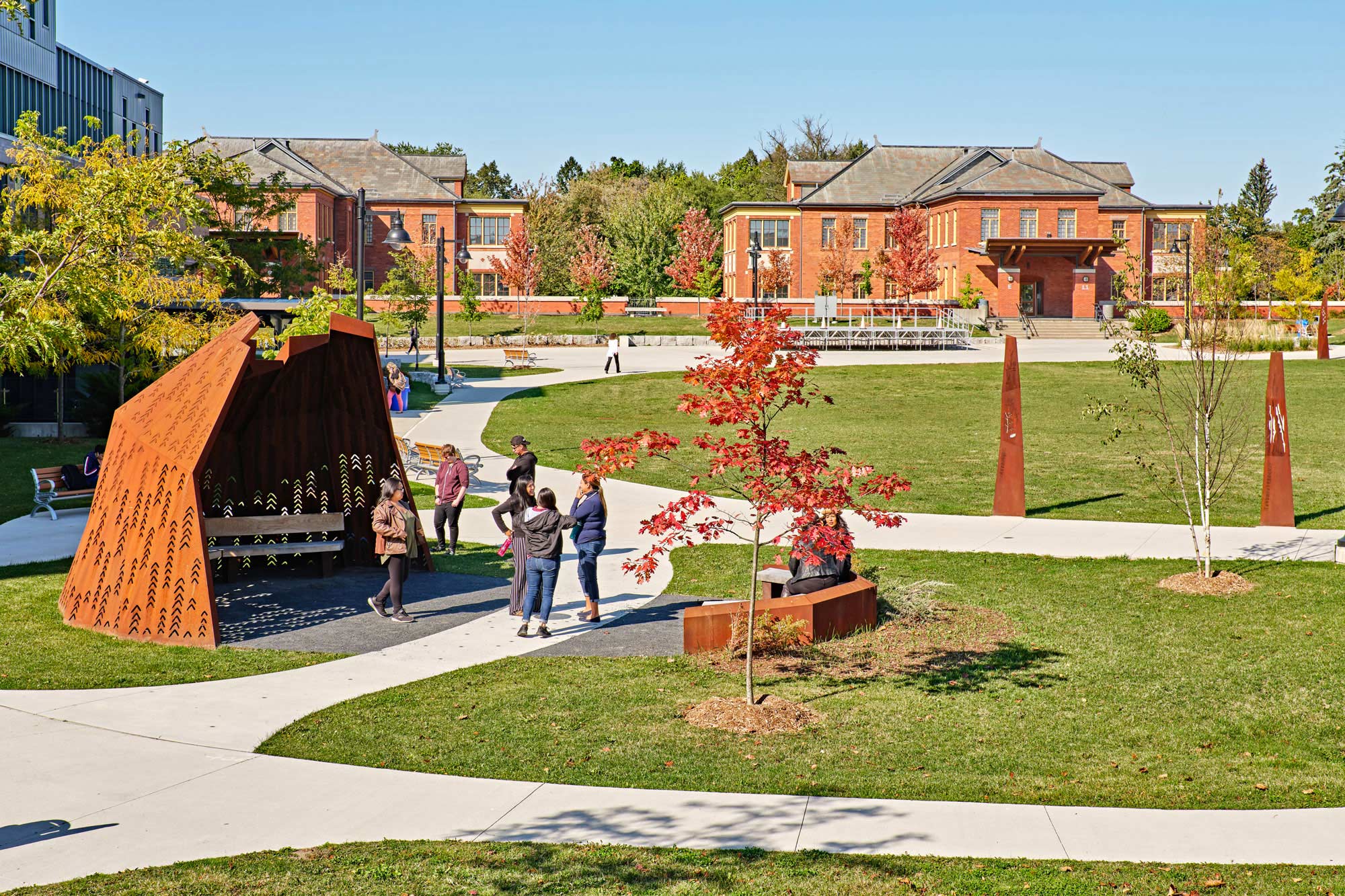Honouring Indigenous traditions and promoting First Nations, Métis, and Inuit culture
Mohawk College began this project with the vision of creating a place that celebrates First Nations, Métis, and Inuit culture within the everyday experience of the Mohawk College campus, and that honours 15,000 years of Indigenous history on this territory. Developed through an inclusive and iterative community engagement process, the Hoop Dance Indigenous Gathering Place creates a unique outdoor space with deep layers of meaning woven into the fabric of its elements.
Set in the College’s main courtyard, the Hoop Dance was designed with a holistic consideration to landscape, architecture, and the wider context within the college and the city. The design includes five elements: the Hoop Dance Gathering Place open-air pavilion, a fire circle, a water garden, a traditional garden, and a Three Sisters garden. Its location in the heart of the college’s main quad underscores the importance of Indigenous place making as an agent of Reconciliation. It is used for outdoor teaching, ceremonies, music, dance, and performances; it is also designed as an informal space for daily use for individual or group study.
The gardens and pavilion are the result of a collaborative and iterative consultation and design process between Brook McIlroy, Mohawk College, Indigenous students of the College, and Elders and members of the Six Nations First Nation, and Mississaugas of the New Credit First Nation Communities. The pavilion is inspired by Indigenous concepts of inclusiveness, time as measured by the sun and moon, the Medicine Wheel, and the creation story. The form and construction reference traditional wood fabrication methods, Indigenous material culture, and the layered spatial organization of the Longhouse. Its non-orthogonal, variably canted and dynamic spatial character suggests a structure in motion—expressive of the Indigenous belief in the animate nature of things.

























